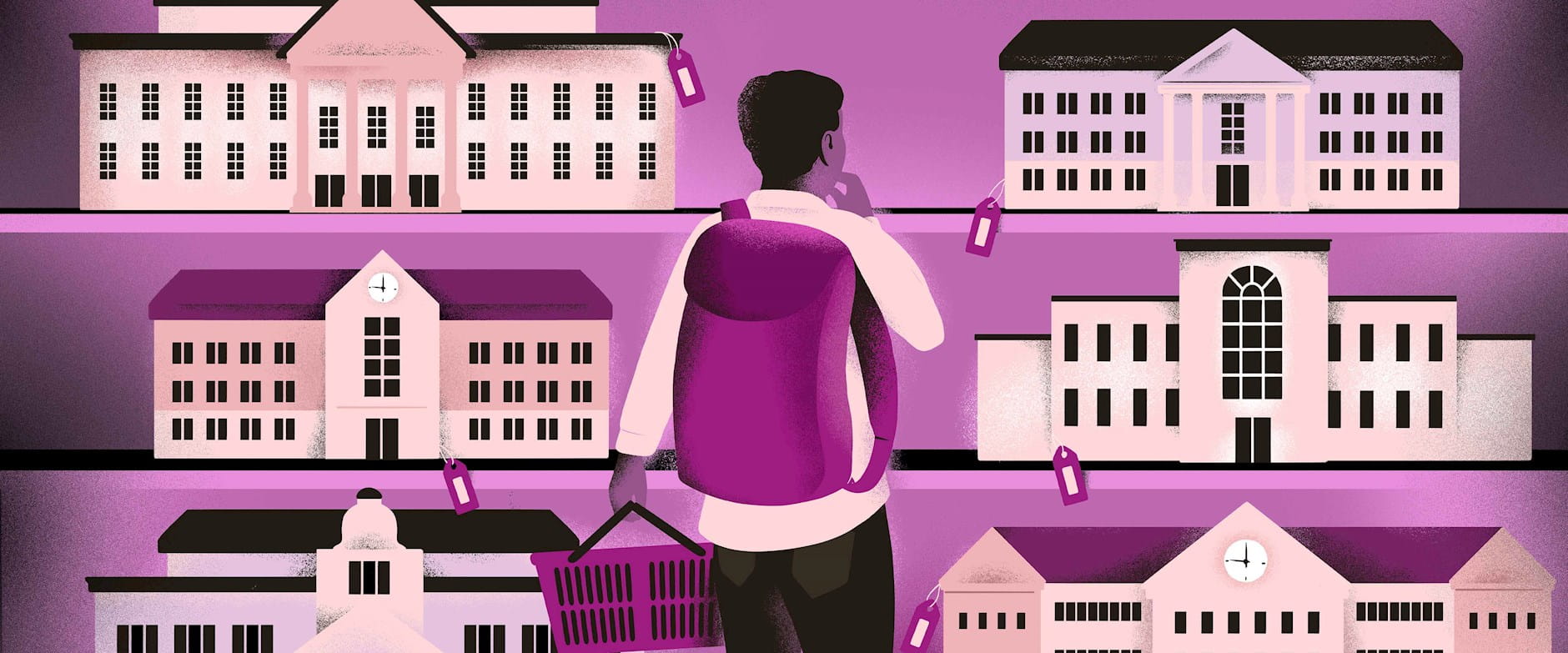
What’s the Impact of Hybrid Work on Commercial Real Estate?
The shift in working arrangements continues to roil demand for office space.
What’s the Impact of Hybrid Work on Commercial Real Estate?
Sébastien Thibault
There’s little question that a bachelor’s degree can substantially boost a person’s lifetime earnings, but students in the United States who attend different colleges go on to earn vastly different amounts. The US Department of Education’s College Scorecard shows that students who attend MIT earn a median annual income of $111,222 10 years after enrolling, while those who attend Alabama State make only $32,084.
According to research by Chicago Booth’s Jack Mountjoy and Washington University in St. Louis’s Brent Hickman, these publicly available income statistics overwhelmingly reflect preexisting differences in the earnings potential of incoming students, rather than substantial variation in the value added by a school itself. Analyzing 10 years of data on 30 diverse state-supported universities in Texas, they demonstrate that better indicators of a college’s real benefit for students are its spending on instruction, emphasis on STEM majors, and graduation rates.
“These results suggest that both the ordering and the magnitudes of the raw outcome comparisons often highlighted in college guides, the popular press, and state funding formulas are driven largely by selection bias,” or the ability of top schools to enroll students who would do well no matter where they attend, the researchers write. This leaves “a smaller and more nuanced role” for the contributions of the educational institutions themselves.
Calculating the value-added of colleges and universities is a hot topic among students, parents, and policy makers. “With state legislators increasingly exploring funding models that directly tie public college appropriations to student outcomes, it [value-added] is also an important consideration for policy-makers deciding where and how much to invest,” Mountjoy and Hickman observe.
Carrying out such an analysis is no simple matter, the researchers argue. The obstacles include finding a big enough sample to estimate the educational benefits conferred by each institution, following a series of individual-level data linkages from student characteristics to enrollment to degree completion and earnings, and creating a research design that takes into account the decentralized, idiosyncratic nature of college admissions and enrollment in the US.
They addressed these challenges by tapping into several administrative registries in Texas, the second-largest US state by population behind California. This enabled them to track 422,949 students in 10 high-school graduating classes from 1999 through 2008 who enrolled in the state’s 30 public universities. Mountjoy and Hickman then employed a “matched applicant” research design that compared the outcomes of students who enrolled at different colleges but applied to and were admitted by the same set of institutions. This approach, they explain, succeeded in balancing precollege predictors of future outcomes, such as high-school test scores and family income, across the different colleges that students ended up attending, yielding fairer institutional comparisons than the raw, uncontrolled statistics.
As with the MIT–Alabama State example, the raw data show huge outcome gaps across students who attended different Texas universities. The state’s public flagship institution, the University of Texas at Austin, has a 6-year graduation rate of 82 percent, compared with just 15 percent at Texas Southern, a historically Black university in Houston. Texas Southern students made $27,000 less each year on average compared with UT Austin students, who earned an average of $55,975 8–10 years after starting college.
But then Mountjoy and Hickman took into account preexisting differences in student potential across these colleges, using their matched applicant approach. The adjusted data show a tenfold reduction in the graduation gap between UT Austin and Texas Southern, and no significant difference in earnings value-added. The state’s other historically Black public university, Prairie View A&M, posted meaningfully higher value-added results than UT Austin on both graduation rates and earnings, the researchers find. Part of the story may be Prairie View’s strong focus on STEM majors, as colleges with higher value-added in producing STEM degrees also tend to have higher value-added on earnings.
The study suggests that admissions selectivity—a staple in popular rankings of colleges—is a poor indicator of value-added. Mountjoy and Hickman report that there’s a “modest selectivity premium” in a graduate’s first few years in the labor market, but it quickly vanishes. Colleges with higher instructional expenditures and higher completion rates, however, produce durable earnings gains. A 10 percentage-point increase in value-added on degree completion predicts a $3,000 increase in earnings value-added, they find.
Jack Mountjoy and Brent R. Hickman, “The Returns to College(s): Relative Value-Added and Match Effects in Higher Education,” Working paper, September 2021.

The shift in working arrangements continues to roil demand for office space.
What’s the Impact of Hybrid Work on Commercial Real Estate?
While consumers are a little hazy about overall inflation, asking them about prices for individual categories yields more realistic forecasts.
People Can Forecast Price Rises—If Asked the Right Questions
A long-running US survey also finds that conservatives are happier than liberals.
Marriage May Be a Key to Happiness

Investors who care about their social and environmental impact are specifying in contracts how their intentions will be carried out.
Example Article Swiss

To some, socially responsible investing used to be about avoiding certain companies. Increasingly, it’s about using market tools to make a difference.
Example Article SwissYour Privacy
We want to demonstrate our commitment to your privacy. Please review Chicago Booth's privacy notice, which provides information explaining how and why we collect particular information when you visit our website.